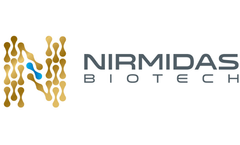Spike Protein Articles & Analysis
14 articles found
In these computer-based methods, the primary amino acid sequence or 3D structure of antigen proteins from the target pathogen is used as input to analyze the existence of sequences (epitopes) capable of binding to major histocompatibility complex (MHC). ...
For efficient fusion and entry, the SARS-CoV-2 spike protein needs to be cleaved by suitable host cell proteases on the cell surface like TMPRSS2. Another entry route is via endocytosis where endosomal cathepsins can cleave the spike protein to facilitate fusion (Hoffmann et al., 2020). Unlike IAV, SARS-CoV-2 replicates solely in ...
The SARS-CoV-2 genome contains a single 29,903 bp RNA strand that codes for replicase-transcriptase, and spike, envelope, membrane, and nucleocapsid structural proteins. Verified SARS-CoV-2 cases have been recognized as a beneficial result of a high-throughput sequencing or RT-PCR assay for respiratory specimens such as nasal/pharyngeal swab specimens, saliva ...
This is where raw enzymes ensure that the mRNA is accurate and complete, ready to instruct cells to produce the target protein. Next comes the modification phase, where raw enzymes shine once again. ...
A new structural target for drug development against COVID-19 has been unveiled today by Sibylla Biotech in collaboration with the Italian National Institute of Nuclear Physics (INFN), the University of Trento and University of Perugia.The breakthrough drug discovery strategy pioneered by Sibylla in this study would not only promise to reduce the risk of drug resistance and harmful side effects, ...
These Al-designed antibodies also exhibited a very high cross-binding hit rate against different Spike protein RBD region mutants in ELISA assay. The Al-designed antibodies were tested in vitro and demonstrated high potency against multiple strains in real virus neutralization assays. ...
Many potential therapeutics aimed at containing the spread of SARS-CoV-2 have targeted the S, or spike, protein, a surface protein that plays a vital role in viral entry into host cells, since that is the approach that was taken with both SARS and MERS coronaviruses. However, according to Insilico's study in collaboration with Nanome, published ...
We demon- strate that the induction of such dual antigen-targeted cell-medi- ated immune response may provide better protection against variants displaying highly mutated Spike proteins, as infectious viral loads of both Wuhan-like and Beta variants were decreased after challenge of ZIP1642 vaccinated hamsters. ...
The infectivity of the Omicron mutant strain is thought to be at least partially due to a large number of mutations in the amino acid sequence on the viral spike protein, which can be used to lock and enter the cells it infects, and the spike protein of the Omicron mutant strain has 37 mutations, which makes it different from the ...
The researchers set their sights on the alpacas. By injecting the SARS-CoV-2 spike protein into the alpacas’ body to trigger its immune response, a series of single domain heavy chain antibodies (VHH) are obtained. The researchers selected C1, H3, C5, and F2, the four VHHs with the highest affinity to the receptor binding domain (RBD) of the virus S ...
If you are fully vaccinated, should you be worried about the impact of COVID-19 variants? No, in fact vaccines have been shown to be highly effective at preventing hospitalizations and deaths from these SARS-CoV-2 variants. While the infamous Delta variant has now been detected in 98 countries and all 50 states, 99% of all COVID-19 deaths and hospitalization cases are unvaccinated, according to ...
Here we performed a prospective pilot study of 71 previously COVID-19 free subjects upon receiving both doses of either the Pfizer (n = 54) or Moderna (n = 17) mRNA vaccine. Anti-spike protein receptor binding domain (RBD) IgG antibodies were measured longitudinally using a qualitative finger stick MidaSpot™ rapid test at the point-of-care for initial ...
“We are going to modify M2SR by adding part of the coding region for the coronavirus spike protein that the virus uses to latch onto cells and begin infection,” says Gabriele Neumann, a senior virologist in Kawaoka’s lab and co-founder of FluGen. “CoroFlu will also express the influenza virus hemagglutinin protein, which ...
A team comprising researchers from both the US, Australia and the UK has analyzed the receptor-binding domain (RBD) and the cleavage site present on spike proteins – a portion of the virus involved in cell penetration and thus of high interest to vaccine developers. The team concluded that the mutations in the RBD protein, along with the ...














